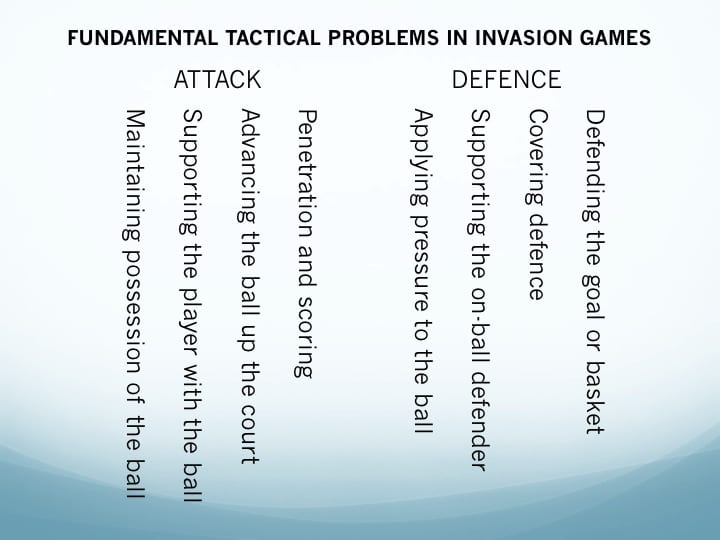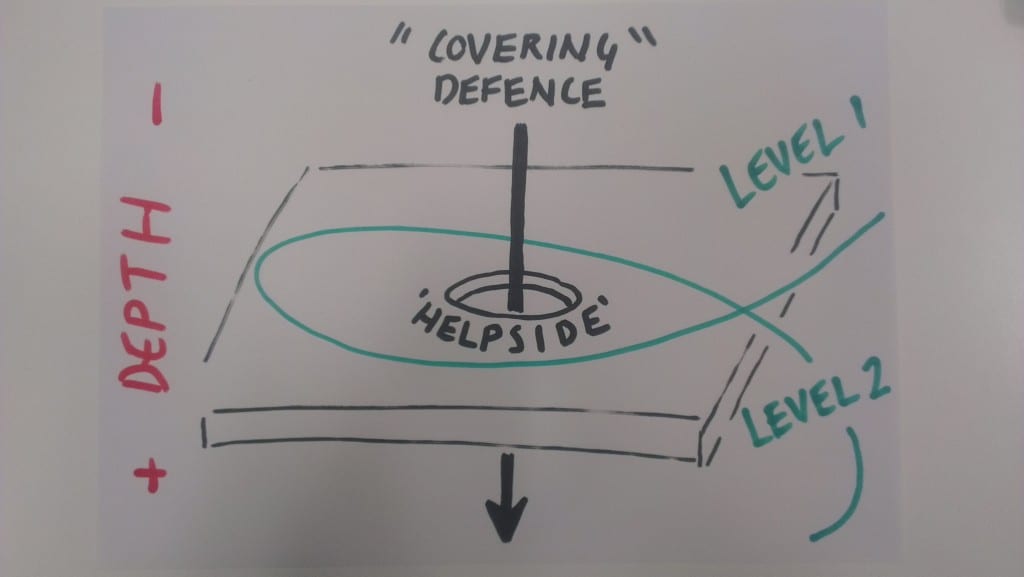I was recently at an event for PE teachers, the purpose of which was to collectively design a new curriculum for PE in the county. No small feat! On the day, various groups of teachers were tasked with developing schemes of work for different sports to cover an entire key stage (or three years). Many of the teachers were experienced in such matters, but nevertheless struggled with the task. They tended to fall back on existing schemes for given sports, ignoring, to a large degree, the new guidelines that had been laid out for the new curriculum. What struck me most, however, was the general lack of thought and discussion going on in the room. Much of this was due, no doubt, to the tight time frame allowed to complete the task, but guiding principles were also conspicuous by their absence. So I began to wonder: what could have helped the teachers in their task? And do coaches face the same sorts of problems in organising seasons of work? My answer below is twofold: yes and yes. And to help me answer these questions, I draw on and combine two important ideas in education: ‘the spiral curriculum’ and ‘threshold concepts’.
The Spiral Curriculum
I have to confess, as a young coach I tended to work in a mainly reactive fashion: dealing each week with what went wrong in last week’s game; only working proactively briefly at each end of a season. Even in developmental coaching, I’d rarely plan more than eight weeks at a time, and then it would be based around coaching fundamental skills, one-by-one, in a fairly boring and predictable manner. It was not until I came across the work of the great Harvard educational psychologist, Jerome Bruner, who had much to say about developmental curricula, that I really began to think deeply and coherently about how I organised my terms and seasons of work. One of Bruner’s main insights for me, was the need to think about and focus on what’s really important in learning a subject, right from the earliest contact.
“We might ask, as a criterion for any subject taught in primary school, whether, when fully developed, it is worth an adult’s knowing, and whether having known it as a child makes a person a better adult. If the answer to both questions in negative or ambiguous, then the material is cluttering the curriculum.” (Bruner, 1977: p. 52)
One of Bruner’s most important related ideas was the spiral curriculum: a method of designing a course of work around basic yet fundamentally important and recurring themes in a discipline. Bruner was involved in reforming science education in the US in the 1950s and 60s and applied this concept in the highly successful and acclaimed programme, Man: A Course of Study. Below, Bruner explains how fundamental themes in science might be taught to very young children in an ‘intellectually honest’ fashion.
“If the understanding of number, measure and probability is judged critical in the pursuit of science, then instruction in these subjects should begin… as early as possible in a manner consistent with the child’s forms of thought. Let the topics be developed and redeveloped in later grades… Many curricula are originally planed with a guiding idea much like the one set forth here. But as curricula are actually executed, as they grow and change, they often lose their original form and suffer relapse into a certain shapelessness.” (Bruner, 1977: p. 54)
This ‘shapelessness’ was what I had seen at the teachers’ workshop. I therefore wondered if the notion of the spiral curriculum might have helped the PE teachers develop a more effective and original set of plans to teach three years of basketball, for example, to KS3 children. Here is my sketch showing how the idea of the spiral curriculum could help shape three terms of work in a given sport (figure 1, below).

In the example of basketball, “the main themes” are the fundamental tactical problems common to all invasion games, as shown in figure 2, below. These problems are, of course, very basic and abstract. Most coaches and teachers, however, are well capable of thinking of ways to develop the idea of penetration and scoring, for example, over the course of three terms (or seasons). You may begin by teaching the use of a simple attacking dribble in the 1v1 situation in term 1, before moving towards the performance of a screen and roll in a 3v3 situation by the end of term 3.

This is all fine in theory, but one thing Bruner doesn’t quite explain is that different learners appreciate solutions to problems and develop skills at different rates and often face barriers to understanding with each journey through a loop of the spiral. To better appreciate how learners move from surface levels of understanding to deeper levels, the notion of ‘threshold concepts’ can be instructive.
Threshold Concepts
Imagine now that we were to zoom in on a single “main theme” from figure 1 (above), let’s say covering defence. Negotiating this problem – how to provide adequate defensive cover when on the opposite side of play to the ball? – is important in all invasion games, but basketball has a particularly useful concept known as ‘helpside’ defence that is taught as part of a man-to-man defensive system. When I first learned about ‘helpside’ positioning at a summer camp aged 15, it immediately transformed my understanding of team defence. Switching between stances and positions as the ball moved from side to side quickly became second nature to me. I also transfered this understanding into football, and quickly became a much better central defender as a result.
Understanding ‘helpside’ defence is therefore a threshold concept, a “conceptual idea that is essentially both simple and memorable and yet also highly generative in that it contains richly layered implications for all kinds of educational contexts” (Meyer & Land, 2006: p. 7). Threshold concepts are like ‘portals to a new and previously inaccessible way of thinking about things’; they lead to seeing things in a new way; and without them, learners often find it difficult to progress to deeper levels of understanding. Without the concept of ‘helpside’, young basketball players often struggle to understand team defence. They are often capable of defending 1v1, but quite useless when required to defend away from the ball. Figure 3 (below) illustrates how the the two ideas – spiral curriculum and threshold concepts – can be effectively combined to plan for the development of learners over an extended period. It effectively depicts a single “main theme” from figure 1, showing how the threshold concept enables the learner to pass into a deeper level of understanding. Without the portal, the learner remains on the surface.

In summary, threshold concepts are transformative, irreversible and integrative (i.e. they expose a previously hidden interrelatedness of things). All sports contain them and it is incumbent on us to identify them and work out the best ways and correct times to introduce them.
Coming back to my initial problem situation, had the PE teachers in the workshop asked themselves:
- What are the main themes (or tactical problems) of the sport? And…
- What threshold concepts will act as the portals to deeper levels of understanding in each theme?
…I believe they would have been in a much stronger positon to create comprehensive, coherent, integrated and exciting schemes of work. This is not an easy task. It requires in-depth knowledge of a sport and the patience to think about and carefully plan a spiral curriculum that meets the needs of a range of learners. However, the value of doing this kind of work cannot be underestimated for teachers and coaches who are serious about facilitating deep learning.
References
Bruner, J. S. (1977) The process of education. London: Harvard University Press.
